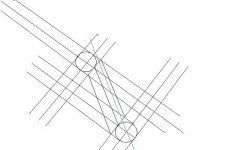Here is my theory...
If you knew EXACTLY where to hit to make a shot, for every shot, you would not play any better than your current level. My contention is that there is SO MUCH to this game, that the theoretical aiming point, line, ball, whatever, is an almost insignificant portion of your overall performance as a player.
How can we prove (or disprove) this theory?
1. Place one of Joe Tuckers ghost ball training aids
under every single ball in a rack of 9 ball. This will tell you the perfect "ghost ball" location for each ball.
2. See if you can run the rack.
3. Repeat 50 racks, keeping score of how many balls you ran each rack.
4. Repeat 50 more racks, without the aid, and keep score.
5. Compare your results.

